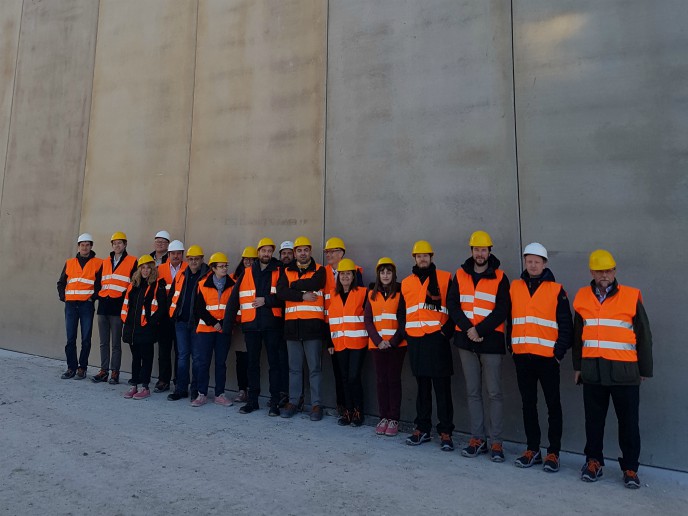Eco-friendly concrete ensures sustainable building
Consumption of concrete is approximately 10 billion tonnes per year, making it the most widely used man-made material on Earth. Only water consumption is higher. Manufacturing all that concrete contributes 5 % of greenhouse gas emissions worldwide. The ambitious EU-funded project ECO-Binder set out to develop an eco-friendly solution to drastically reduce the carbon footprint of concrete production. The team’s goals went much further, though. Researchers also took the opportunity to integrate even more safety, comfort, and stability into a single product package at a competitive price. No longer bound to conventional cement Concrete is formed by mixing a binder, typically cement, with water. Conventional ordinary Portland cement (OPC) is the binder of choice but its fabrication comes at a steep price to the environment. Belite-Ye’elimite-Ferrite (BYF)-based cement binders are an eco-friendly family of materials gaining attention for use in green concrete. The performances of the new class of cements are comparable to that of OPC. However, the lower calcium content, burning temperature, and grinding energy demand result in approximately 30 % lower CO2 emissions associated with concrete fabrication. Within the first two years of the four-year project, the team had demonstrated the feasibility of the prefabricated elements combining novel BYF binders and advanced functional finishing materials manufacturing. Researchers then installed those elements at five test sites in Italy, Romania, Spain, and UK. Demonstrable success Four different concrete materials manufactured with three BYF cements and OPC, were employed in small-scale mock-ups in Romania, Spain, and UK, and at a test facility in Spain. Scientists compared the effects of different but real geographical conditions and experimentally modulated ones on the concretes. According to project coordinator Arianna Amati, the crowning achievement was manufacturing the BYF concrete in real-scale. More specifically, 11-metre tall monolithic panels were installed and tested in a real-case scenario at the demo site in Mantova, Italy. She explains, “One hundred sixty-five m2 of façade of the facility were built with precast components manufactured with BYF concretes with the goal of demonstrating the full replacement of OPC-based product in real scale.” Testing of these small-scale and full-scale mock-ups confirmed the successful achievement of project goals. Prefabricated panels with novel BYF products demonstrated 24 % lower embodied energy and a 24 % reduction in carbon footprint. In addition, insulation properties were improved 10 %. Less drying shrinkage of BYF concretes (enhanced dimensional stability) without the use of additives resulted in a reduction in air leaks. All of this was delivered at a cost 15 % lower than conventional OPC products. An ECO-Binder training video is available through the project website to help the construction industry implement the new BYF concretes in the most effective way. Technology is projected to be available on the market in five years. ECO-Binder has actively promoted the new materials, presenting at 48 events in its four-year project duration. Researchers also organised four workshops and published three articles in magazines and six in scientific journals. In the meantime, momentum should continue to build with presentations, brochures, and roll-up posters all available for download on the project website.
Keywords
ECO-Binder, concrete, BYF, OPC, cement, binder, carbon footprint, eco-friendly, CO2







